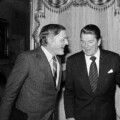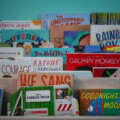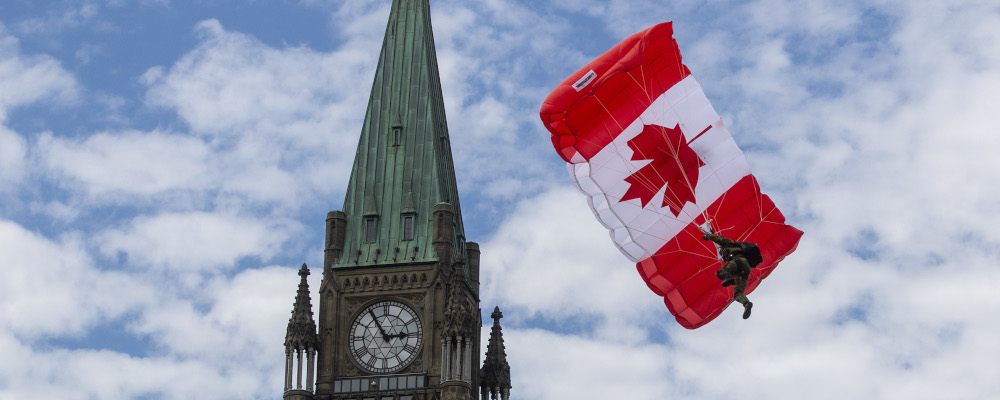Canada Day is upon us! A day to celebrate all that makes us proud to call this vast land “home”.
For most of us, it’s the chance to have a long weekend in the sun. Some might spend it at the cottage, or in city centres basking amongst the crowds, face painting, and fireworks. It’s a celebration of the fact that we are blessed to live in one of the most peaceful, stable, and prosperous places on earth.
For a small segment of the populace, it’s also a day to reflect on the age-old question: what is it that makes us unique as Canadians?
It’s a question that has many answers.
Unlike our American brethren, who on Tuesday will celebrate their own national birthday, Canadians have never had quite as clear a picture of our national identity. Marshall McLuhan once said that “Canada is the only country in the world that knows how to live without an identity”.
Is it our diversity—both linguistic and cultural—that defines us? Are we a cultural mosaic that embraces our difference in contrast to the U.S. “melting pot”?
Is it our dualistic origins, a product of the “Two Solitudes” of French and English that shapes us? Or perhaps we are defined by our Aboriginal, Metis, and Inuit heritage, which has imbued in us a deep love of the land we inhabit?
For some, the answer is as simple as: we are not American. While we love them as neighbours, we have a strong sense that we are different from them.
Perhaps it is because of this ambiguity that governments in Canada have sought to participate in the project of defining our national identity. Throughout our history there have been unique contributions from both Liberal and Conservative governments to that project.
Because of their electoral dominance during the 20th century, Liberal prime ministers had ample time to advance their visions of national identity.
Lester B. Pearson sought to enshrine the notion of Canadians as international peacekeepers into the national mythos. Jean Chretien honoured this legacy, building a National Peacekeeping Monument in 1998.
Pierre Trudeau introduced the policy of multiculturalism, envisioning a country where individuals would be “encouraged to share their cultural expression and values with other Canadians and so contribute to a richer life for us all”.
And many Liberal leaders have sought to define us as a “caring and sharing nation”, bounded by some of our national institutions, like the Charter of Rights & Freedoms or universal health care.
Conversely, Conservative Governments have emphasized different narratives. Founding Father John A. Macdonald argued that we were a nation founded on the ideals of “peace, order, and good government”, in contrast to the more revolutionary “life, liberty, and the pursuit of happiness” espoused by our neighbours.
John Diefenbaker declared that Canada was “a dynamic northern nation” and laid out a northern vision for the country. It would celebrate our identity as “the true North, strong & free”, with emphasis on our ability to thrive in a rugged landscape. Brian Mulroney built on this, commissioning the world’s largest arctic icebreaker, re-emphasizing Conservative commitment to the North in a way that wasn’t done by Liberals governments.
More recently, Stephen Harper sought to leave his mark by celebrating Canada’s military and royal heritage. Rather than viewing the resolution of the Suez Crisis as the defining moment of Canadian foreign policy, his government emphasized the Battle of Vimy Ridge as the birth of our nation—a moment that showcased our fortitude and commitment to fighting for our way of life. Vimy was featured prominently on coinage and money was invested to revitalize the memorial in France.
Moreover, his government reversed a 1968 decision by Trudeau the Elder to remove the word “Royal” from our military branches. Combined with numerous royal visits and an extensive celebration of the Queen’s Diamond Jubilee, the Harper government sought to place our monarchy, along with its values of service and perseverance, at the centre of our national identity.
All of this brings us to our current government, whose recent decision to redesign the Canadian passport appears emblematic of its approach to identity-building.
Gone from the passport are Vimy Ridge, Billy Bishop, the pier in Halifax, a westbound train, and an Inukshuk (amongst other national symbols). Instead, we find pictures of the changing seasons and of nature.

Our historical stories have been erased. This has given new breath to the arguments of many on the Right that the current government is more focused on “apologizing” for our history rather than “celebrating” it. Perhaps it’s not an either-or proposition.
Now, I grant that very few people have taken the time to look through their passports and reflect on their national identity.
But the episode harkens back to Justin Trudeau’s declaration in 2016 that Canada has “no core identity” and that we are “the first post-national state”.
This mantra has been evident throughout his tenure as prime minister. Unlike Liberal and Conservative governments before him, his government has done relatively little to weave a narrative around national identity. The passport redesign has put this question in front of us. Do we want a government that engages in national identity construction, or not?
There is a strong likelihood that defining national identity may be a fool’s errand for governments. Our identity may be organic—growing from the ground up over the course of our 156 years. But the issue of national unity—an ever-present reality in Canada—looms large. Transcendent leaders have the ability to unite. To weave a narrative about where we’ve been and where we’re going. This is storytelling at its finest, and some of Canada’s greatest leaders have left their marks. In the coming years as elections loom and the political landscape continues to reshape, it will be interesting to see what stories we are told, if any.
In the meantime, on this celebration of our Confederation, I hope you take a moment to reflect on what makes you a Canadian. What binds us together from sea to sea to shining sea?
Happy Canada Day, Hub readers!
Recommended for You

‘Buckley was a pioneer’: William F. Buckley Jr.’s legacy as America’s leading conservative intellectual

Canadians ‘risk being fired’ for Charlie Kirk assassination justifications and celebrations

‘Now is the perfect opportunity’: What’s the value of the social sciences and humanities in Canada today?

Kelden Formosa: Welcome back to school. Are your kids being taught how to read?



